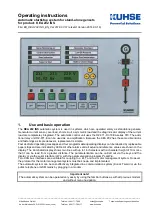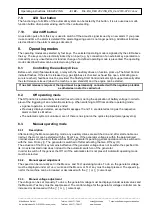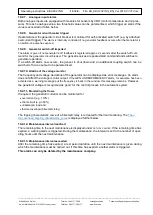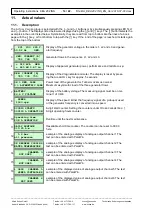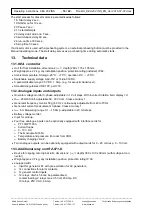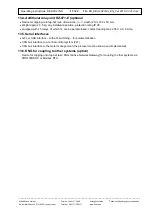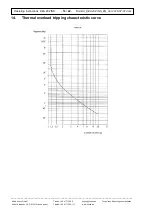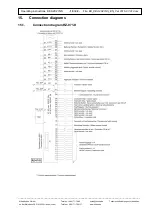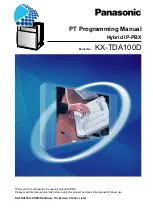
Operating instructions KEA 202 INS -
5 / 22
- File:
BA_KEA 202 INS_EN_Ver 2016-07-01.docx
______________________________________________________________________________________
Alfred Kuhse GmbH
Telefon: +49 4171-798-0
kuhse@kuhse.de
Technische Änderungen vorbehalten
An der Kleinbahn 39, D-21423 Winsen (Luhe)
Telefax: +49 4171-798-117
www.kuhse.de
6.
Basic operation of automatic system
The automatic system can be operated very easily, as with all previous models and without menu navigation.
The operating mode can be selected using four buttons. In
MANUAL
and
TEST
mode, the generator is switched
on and off using the buttons arranged in the mimic diagram.
In M
ANUAL
mode, the S
TART
button is programmed for a manual start. The LED T
EST
and A
LARM
O
FF
buttons
are self-explanatory.
During normal operation, the display is only required to display pending alarms and the actual values. The
menu is also easy to use here: Use the [→] and [←] keys to select the required group (alarms or actual val-
ues) and use the [↑] and [↓] keys to display the required actual value or pending alarms.
6.1.
Operation of the display
You select a parameter or a value just like you read a book. The different groups are saved as 'pages'. The
groups can be scrolled through forwards and backwards using the [→] and [←]
cursor keys. Within a group,
they are
read like 'lines' of a text from top to bottom. The lines are selected by pressing the cursor buttons [↓]
(down) and [↑] (up). If the ‘end of the page’ is reached, it starts again from the top or the bottom.
By holding the LED
T
EST
key and pressing the [←] key, the A
CTUAL VALUES
group is directly selected; by
holding LED
T
EST
and pressing the [→] key, the display of alarms is directly selected.
To change a parameter, first enter the valid ID number. A Group 0 parameter, -G
ENERAL
P
ARAMETERS
-, can
be changed without entering a valid ID number. A parameter is changed as described above.
1.
Select the group of the desired parameters with the [←] and [→] buttons.
2.
The display with the required parameter is selected using the [↑] or [↓] key. A maximum of two parameters
are displayed.
3. Press the O
FF
and LED
T
EST
buttons (function P
ARA ON
or P
ARA OFF
) at the same time. The parameteri-
sation mode is initiated and is indicated by the solid cursor [ █ ]. It is no longer possible to change the
group.
4. The required parameter is
selected with the [↑] or [↓] key.
5. By simultaneously pressing O
FF
and A
LARM OFF
(E
NTER
function), the displayed line is defined, which is
indicated by the cursor shape that now displays the parameter position to be changed by an underscore [
_
]. The line may no longer deselected.
6.
The parameter position to be changed is selected using the [←] and [→] cursor buttons and a numeric
parameter is increased or decreased by 1 using the [↑] and [↓] buttons. A parameter that is displayed by a
letter (prefix, alarm coding), is changed using these buttons in reverse order.
7. The displayed parameter is applied by simultaneously pressing Off and Alarm off.
If you want to cancel the parameterisation step, simultaneously press the Off and LED Test buttons instead
of O
FF
and A
LARM OFF
.
6.2.
Display contrast setting
The display contrast is increased by holding the LED T
EST
button and pressing the [↑] button (display becomes
darker) or decreased by holding the [↓] button (display becomes brighter).

